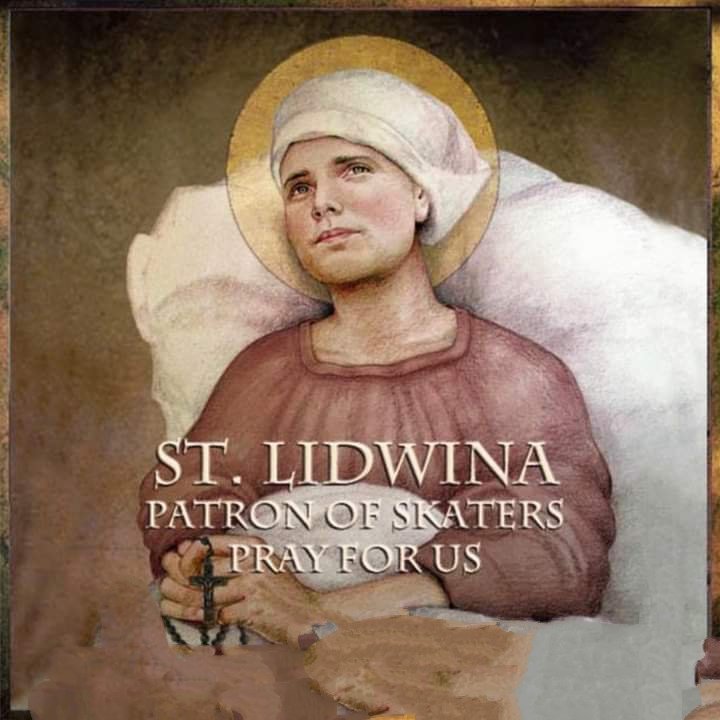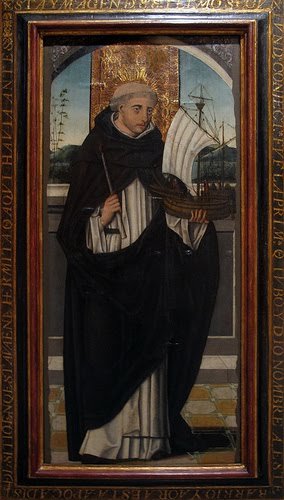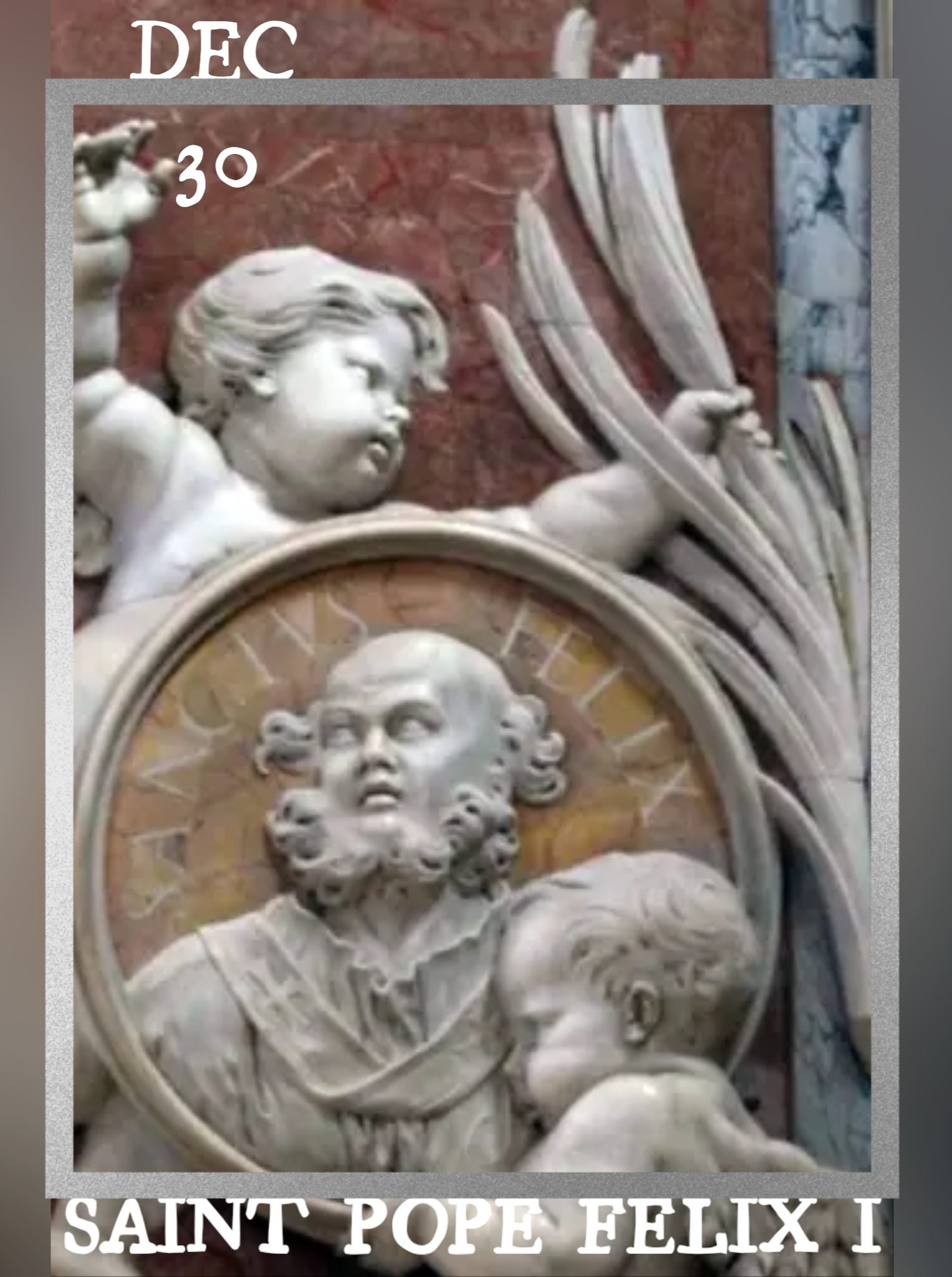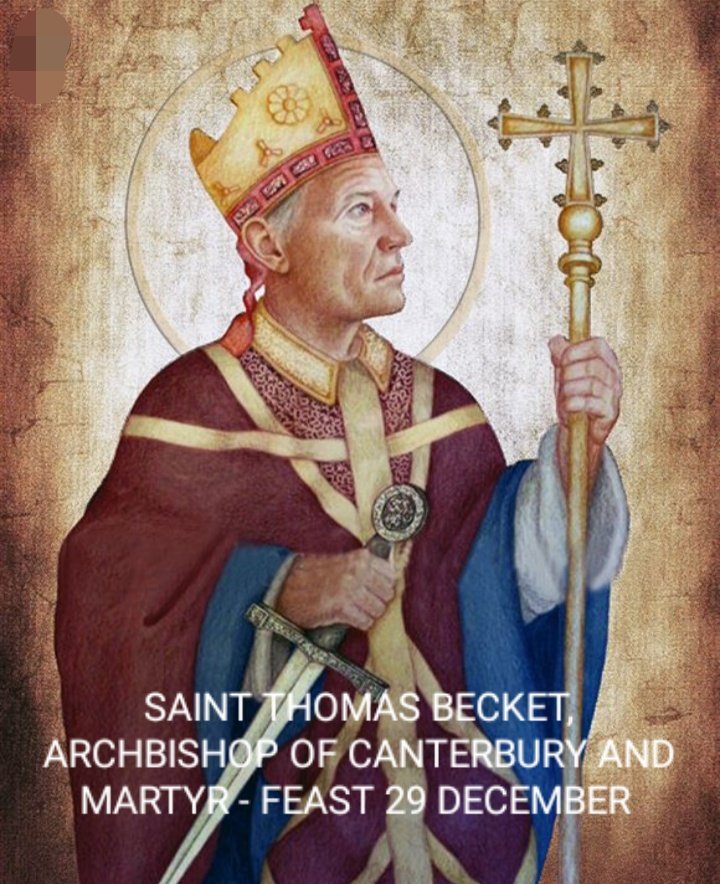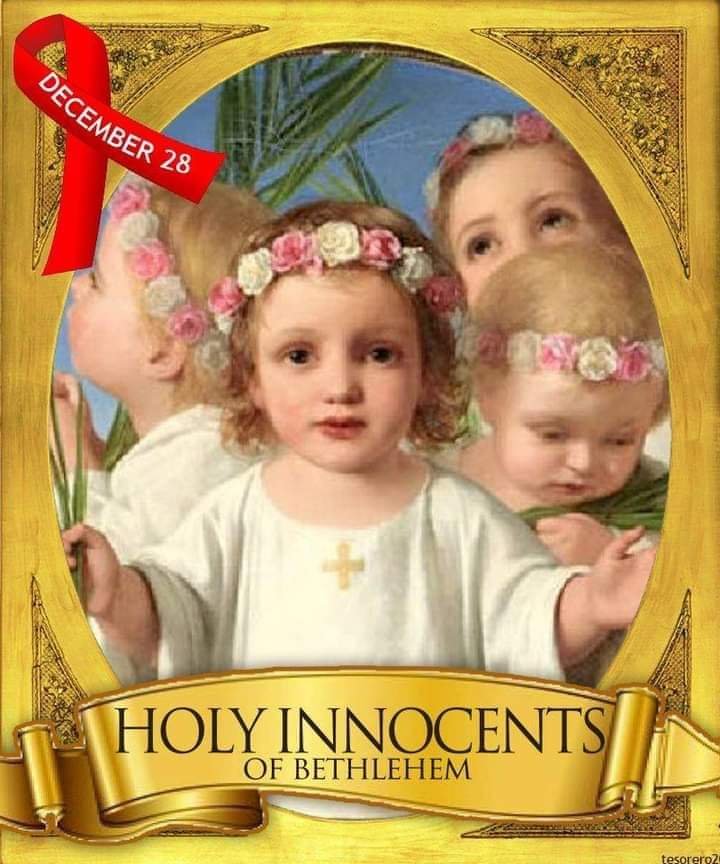
MONTHLY DEVOTIONAL FOR 13th APRIL
April 13, 2023
John 14:6
April 14, 2023FEAST OF BLESSED PETER GONSALEZ
FEAST DAY – 14th APRIL
Blessed Peter Gonzalez OP. (1190 – 1246) also known as -Pedro González Telmo, Saint Telmo, or Saint Elmo, was a Castilian Priest, and Friar of the Order of Preachers, born in Astorga, Spain. He received a good education from his uncle, the Bishop of Astorga. His uncle also bestowed on him the role of Canon of Astorga Cathedral.
He is known as Confessor, Preacher – the Patron of boatmen, mariners, sailors, watermen, fisherman, Tui, Spain, Tui-Vigo, Spain, and his attributes are a Dominican holding a blue candle or a candle with a blue flame; Dominican lying on his cloak which is spread over hot coals; Dominican holding fire in his bare hands; Dominican catching fish with his bare hands; Dominican beside the ocean, often holding or otherwise protecting a ship.
Saint Paul had a conversion experience on the road to Damascus. Many years later, the same proved true for Peter Gonzalez, who triumphantly rode his horse into the Spanish city of Astorga in the 13th century to take up an important post at the cathedral. The animal stumbled and fell, leaving Peter in the mud and onlookers amused.
Humbled, Peter re-evaluated his motivations–his bishop-uncle had secured the cathedral post for him– and started him down a new path. He became a Dominican priest and proved to be a most effective preacher. He spent much of his time as court chaplain and attempted to exert positive influence on the behaviour of members of the court.

After King Ferdinand III and his troops defeated the Moors at Cordoba, Peter was successful in restraining the soldiers from pillaging and persuaded the king to treat the defeated Moors with compassion. Gonzales burned with so ardent a desire to preach the great truths of our holy religion to the poor and the peasants, that no entreaties or solicitations could retain him at court.
Galicia, and the rest of the coast, were the chief theatres of his pious labours, the latter years of his life. Neither mountains, nor places of the most difficult access in Asturia, and other parts, nor the ignorance and brutality of the people, could daunt his courage. Under these fatigues, prayer was his refreshment. He appeared every where as a new apostle. But the success of his ministry was the most surprising in the diocese of Compostela and Tuy, in which also he wrought many miracles.
At Bayona in Galicia, the number of his auditors having obliged him to preach in a great plain, in the open fields, and a violent storm arising with wind, thunder, and lightning, his whole audience began to be very uneasy, and thought to prevent the worst by flying. The holy preacher prevailed upon them to stay, and by prayer appeased the tempest.
All places round about them were deluged; but not a drop fell on the auditory. The saint had a particular zeal to instruct the poor in the country, and the sailors, whom he sought on their vessels, and among whom he finished his mortal course. He foretold his death on Palm-Sunday, and desiring to die in the arms of his brethren at Compostela, set out from Tuy thither, but, growing worse on the road, returned to the former place on foot; so unwilling was he to remit anything in his penitential life.
Luke, the famous bishop of Tuy, his great admirer and friend, attended him to his last breath; buried him honourably in his cathedral, and in his last will gave directions for his own body to be laid near the remains of this servant of God. They are now exposed to public veneration, in the same church, in a magnificent silver shrine, and have been honoured with many miracles.
Some place his death on the 15th, and others on the 14th of April, in 1246. Pope Innocent IV. beatified him eight years after in 1254, and granted an office to his Order in Spain, which was extended to the city of Tuy, though he has not been solemnly canonized. Pope Benedict XIV approved his office for the whole Order of Saint Dominick. The Spanish and Portuguese mariners invoke his intercession in storms, and by it have often received sensible marks of the divine succour.
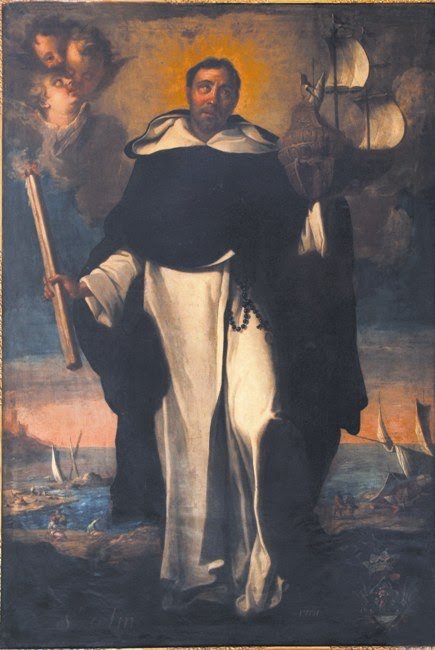
After retiring from the court, Peter devoted the remainder of his life to preaching in northwest Spain. Having developed a special mission to Spanish and Portuguese seamen, he is considered their patron. Peter Gonzalez died in 1246. Although his cultus was confirmed in 1741 by Pope Benedict XIV and despite his common epithet of “saint,” Peter was never formally Canonised. Peter González was Beatified in 1254 by Pope Innocent IV.
The diminutive “Elmo” (or “Telmo”) belongs properly to the Martyr-Bishop Saint Erasmus (died c. 303), one of the Fourteen Holy Helpers, of whose name “Elmo” is a contraction. However, as Erasmus is the patron saint of sailors generally and Peter González of Spanish and Portuguese sailors specifically, they have both been popularly invoked as “Saint Elmo.“
PRAYER
Almighty God, you bestowed the singular help of Blessed Peter on those in peril from the sea. By the help of his prayers may the light of your grace shine forth in all the storms of this life and enable us to find the harbor of everlasting salvation.
We ask this through our Lord Jesus Christ, your Son, who lives and reigns with you and the Holy Spirit, one God, for ever and ever. Amen
( General Calendar of the Order of Preachers.)
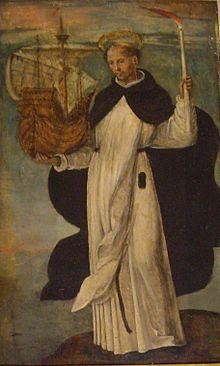
Saint Peter, pray for us that our daily actions will be an inspiration to other peoples faith.
.**************************************
ALSO CELEBRATED
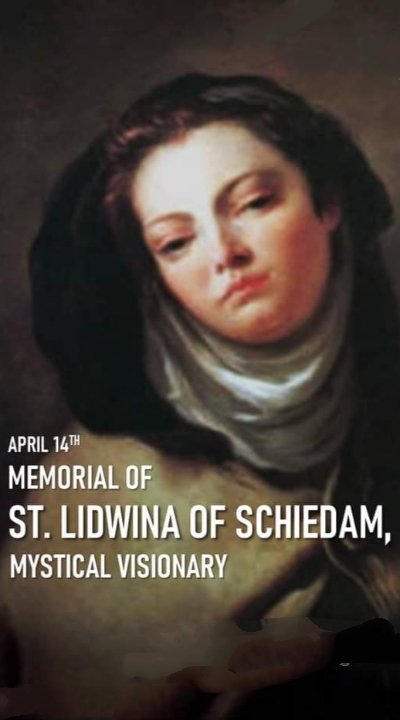
SAINT LYDWINE OF SCHIEDAM – FEAST DAY 14th APRIL
Lidwina (Lydwine, Lydwid, Lidwid, Liduina of Schiedam) (1380–1433) was a Dutch mystic who is honored as a saint by the Catholic Church. She is the patron saint of the town of Schiedam, of chronic pain, and of ice skating.
Saint Lydwine of Schiedam was born at Schiedam, Holland, one of nine children of a working man. After an injury in her youth, she became bedridden and suffered the rest of her life from various illnesses and diseases. She experienced mystical gifts, including supernatural visions of Heaven, hell, Purgatory, apparitions of Christ, and the stigmata. Thomas a Kempis wrote her biography.
Saint Lydwine of Schiedam was canonised by Pope Leo XIII in 1890. Lydwine suffered a fall while ice skating in 1396, when a friend collided with her and caused her to break a rib on the right side. From this injury, she never recovered. An abscess formed inside her body which later burst and caused Lydwine extreme suffering.
Eventually, she was to suffer a series of mysterious illnesses which in retrospect seemed to be from the hands of God. Lydwine heroically accepted her plight as the will of God and offered up her sufferings for the sins of humanity. Some of the illnesses which affected Lydwine were headaches, vomiting, fever, thirst, bedsores, toothaches, spasms of the muscles, blindness, neuritis and the stigmata. Saint Lydwine of Schiedam’s feast day is April 14.

Lidwina is also thought to be one of the first documented cases of multiple sclerosis. At the age of fifteen, she suffered a serious injury while ice skating and became progressively disabled. Hendrik Mande wrote for her consolation, a pious tract in Dutch. She fasted frequently and acquired a reputation as a healer and Holy woman. Upon her death in 1433, her grave became a favourite place of pilgrimage.
Lidwina was born in Schiedam, Holland, one of nine children. Her father was a labourer. At age 15, she was ice skating when she fell and broke a rib. She never recovered and became progressively disabled for the rest of her life. Her biographers state that she became paralysed except for her left hand and that great pieces of her body fell off, and that blood poured from her mouth, ears, and nose. Today, some point out that Saint Lidwina is one of the first known multiple sclerosis patients and attribute her disability to the effects of the disease and her fall.
After her fall, Lidwina fasted continuously and acquired fame as a healer and Holy woman. The town officials of Schiedam, her hometown, promulgated a document (which has survived) that attests to her complete lack of food and sleep. At first, she ate small fragments of apple, then bits of date and watered wine, then river water contaminated with salt from the tides.
The authenticating document from Schiedam also attests that Lidwina shed skin, bones, parts of her intestines, which her parents kept in a vase and which gave off a sweet odour. These excited so much attention that Lidwina had her mother bury them.
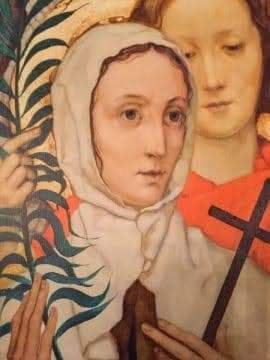
Lidwina was credited with many acts of curing and charity, providing abundant food and nourishment to the needy that miraculously multiplied or lasted longer than was expected. Lidwina died at the age of 53.
Several hagiographical accounts of her life exist. One of these states that while the soldiers of Philip of Burgundy were occupying Schiedam, a guard was set around her to test her fasts, which were authenticated. It is also reported that four soldiers abused her during this occupation, claiming that Lidwina’s swollen body was due to her being impregnated by the local Priest rather than from her sickness.
The well-known German Preacher and poet, Friar John Brugman, wrote two lives of Saint Lidwina, the first in 1433, was reprinted anonymously at Leuven in 1448, and later epitomised by Thomas à Kempis at Cologne in his Vita Lidewigis. The second life appeared at Schiedam in 1498; both have been embodied by the Bollandists in the Acta Sanctorum under 2 April. More recently, in 1901, Joris-Karl Huysmans published her biography.
Lidwina died in 1433 and was buried in a marble tomb in the Chapel of the Parish Church of Schiedam which became a place of pilgrimage. Thomas à Kempis’ publication caused an increase in veneration. Her father’s house, in which she died, was, after her death, converted into a Monastery of Gray Sisters, of the third order of Saint Francis of Assisi. The Calvinists demolished the above-mentioned Chapel; but changed the Monastery into a hospital for orphans. In 1615, her relics were taken to Brussels and enshrined in the Church of Saint Gudula.
In 1859, the Church of Our Lady of Visitation was opened on the Nieuwe Haven in Schiedam, commonly called Frankelandsekerk after the area it was located in (West-Frankeland). In 1871, Lidwina’s relics were returned to Schiedam. On 14 March 1890, Pope Leo XIII granted Lidwina equipollent canonisation in view of her long-standing Saintly notoriety. In 1931, this church was officially dedicated to Saint Lidwina and called Church of Lidwina (Lidwinakerk).
After 1968, veneration of Lidwina was moved to the “Singelkerk”, hence known as the Church of Saint Lidwina and Our Lady of the Rosary. The church contains four paintings depicting scenes from the life of Saint Lidwina.
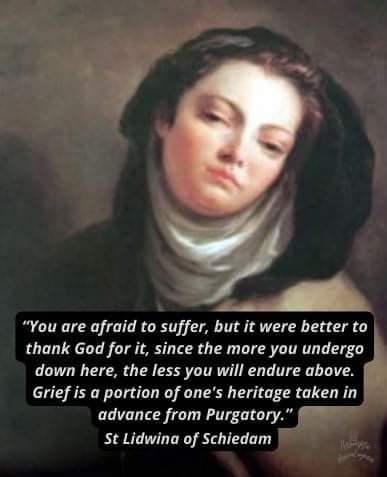
The paintings date from the early twentieth century and were made by the painter Jan Dunselman (1863–1931). The panels come from the Frankeland church that was demolished in 1968. The church was elevated to become a minor Basilica on 18 June 1990. The Church is now popularly known as the Basilica of Lidwina.
After the closure of the Church of Lidwina in 1969, the statue of the Saint and her relics were removed to the Chapel dedicated to her in the rest-home West-Frankeland on the Sint Liduinastraat. Only after the demolition of the Chapel in 1987 were all devotional objects removed to the Singelkerk, i.e. the Basilica of Lidwina. Saint Lydwine of Schiedam is the Patron Saint of ice skaters and the chronically ill.
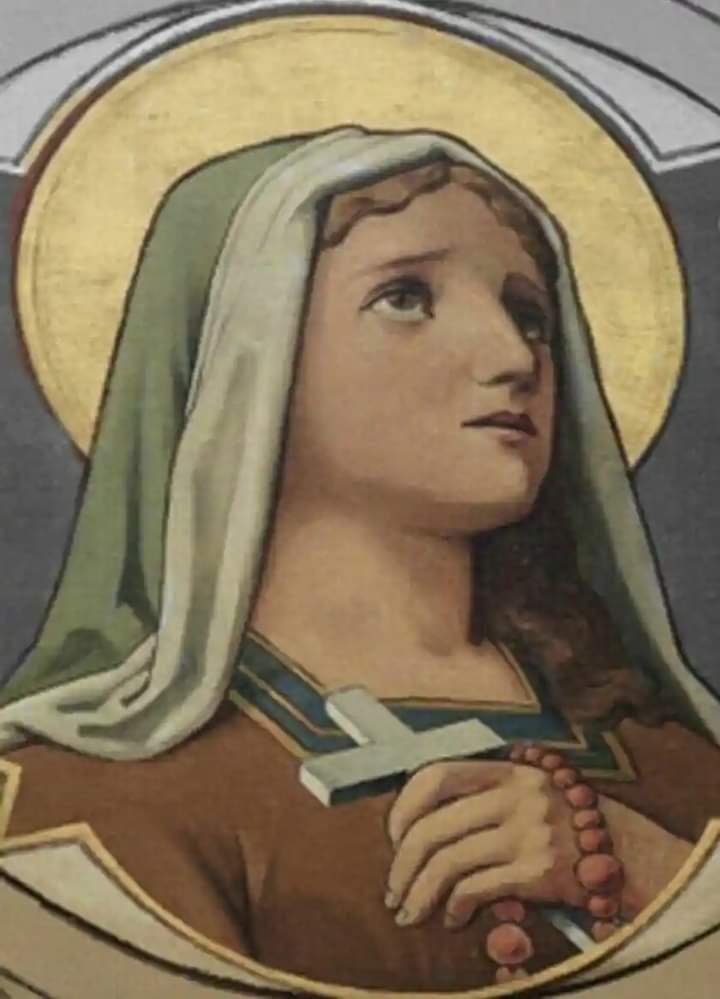
Lidwina is represented receiving a branch of roses and a flowering rod from an Angel. Lidwina had multiple sclerosis. Historical texts reveal that she was affected by a debilitating disease, sharing many characteristics with multiple sclerosis, such as the age of its onset, duration, and course of disease.
PRAYER
Saint Lidwina, you suffered from a debilitating disease after your fall when skating and offered all your sufferings as a sacrifice to God. We pray for your intercession for all those suffering from consistent daily chronic pain.
St. Lidwina, you can raise our prayers to God to bring relief to those who are suffering and bring forth healing, not only to their physical pain but also to their suffering souls. In Jesus we trust. Amen
